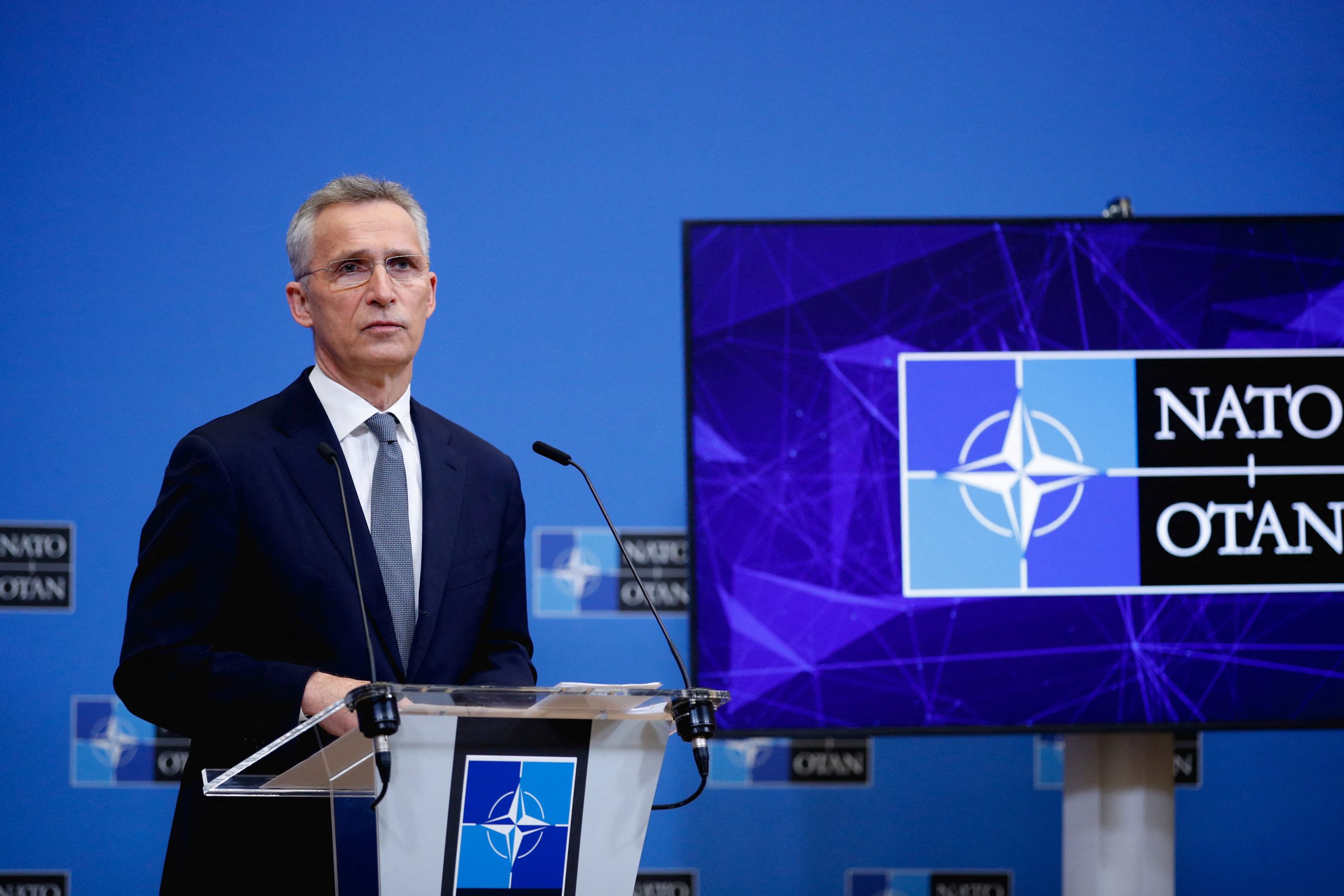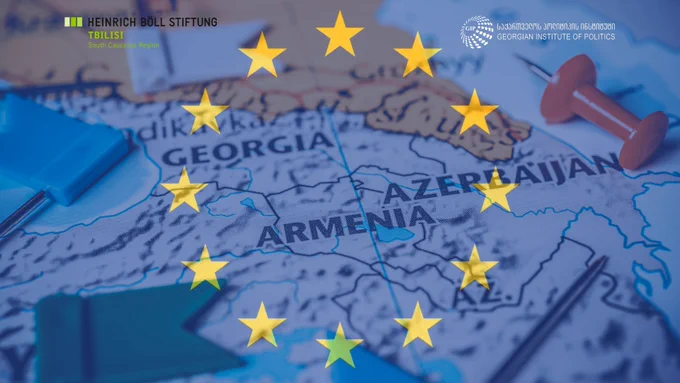
NATO in the South Caucasus
Originally published on Meydan TV
In the second half of March, the South Caucasus was visited by a prominent and rare guest – the secretary general of NATO, Jens Stoltenberg. Starting his visit on March 17 in Baku, he visited Tbilisi on March 18, and by March 19, he was already in Yerevan.
In politics, Stoltenberg is an ambiguous figure. In his time as Secretary General of NATO and former prime minister of Norway, Jens Stoltenberg released an autobiographical book “My Story”. In it, he writes that his father’s house – Torvald Stoltenberg, Minister of Defense and later Minister of Foreign Affairs of Norway, was always visited by diplomats from around the world, including those from Eastern Bloc countries.
In his youth, the future Secretary General participated in anti-war demonstrations, threw stones at the windows of the American embassy in Oslo, protesting against the Vietnam War, and even, as claimed by the publication “Arguments of the Week”, called for Norway’s exit from NATO.
Moreover, in the book, he confesses that during that time he had multiple meetings with the cultural attaché of the Russian embassy, Boris Kirillov, with whom he discussed politics, knowing about Kirillov’s service in the KGB.
Stoltenberg claims that when he realized that Kirillov was trying to recruit him, he severed ties with him and reported everything to the Ministry of Defense and the Police Intelligence Service of Norway, especially since he was about to enter the Government Commission on Defense.
- ‘Threats of annexation of Georgian territories are unacceptable’. Georgian PM met the NATO secretary general
- Havana Syndrome traces and GRU agents in Tbilisi: The Insider, Spiegel, CBS Investigations
- “Stoltenberg’s visit aims to assess escalation risks” – Opinion from Yerevan
He even revealed the codename assigned to him when the KGB opened a case against him – “Steklov.” This case did not work in his favor, and Stoltenberg changed his political views, adopting an anti-Soviet position. After the collapse of the USSR, he sharply criticized Russian foreign policy, believing that Russia threatens security and stability in Europe.
He characterized the annexation of Crimea as a “cruel reminder of the importance of NATO” and emphasized the need to increase the military power of the alliance, including nuclear weapons, and the importance of adhering to Article 5 of the alliance’s charter and protecting Eastern European NATO member countries.
In Azerbaijan, Stoltenberg met with president Ilham Aliyev, as well as with the foreign and defense Ministers of the Republic, Jeyhun Bayramov and Zakir Hasanov. Considering Azerbaijan’s participation in the Non-Aligned Movement, Azerbaijan does not seek NATO membership, and relations between Baku and the alliance do not carry any inflated expectations.
However, the NATO secretary general arrived in Baku against the backdrop of tension in Azerbaijan’s relations with the West, especially with France, which supported Yerevan in the Karabakh conflict.
The Secretary General’s visit provided President Aliyev with an opportunity to alleviate the accumulated tension. For NATO, the visit to Baku became one of the tools to strengthen its sphere of influence in the Caucasus. Moreover, the West seeks to accelerate Armenia’s distancing from Russia, and Stoltenberg’s visit to Baku aimed to mitigate the risk of a new escalation of the conflict, which could hinder this process.
In this regard, the NATO Secretary General called on Yerevan and Baku to engage in constructive interaction. However, among Azerbaijani political analysts, there is an opinion that Stoltenberg came to Baku primarily to discuss the Russo-Ukrainian, rather than the Armenian-Azerbaijani conflict.
Of course, Baku supports the territorial integrity of Ukraine, provides humanitarian aid to it, but avoids tensions with Russia and is unlikely to participate in any anti-Russian actions. However, the fact that during a joint press conference, Stoltenberg thanked Azerbaijan for ensuring energy security and highly praised the global climate summit scheduled for November in Azerbaijan indicates that cooperation between Baku and NATO is not limited solely to military matters.
The NATO secretary general conducted himself somewhat differently in Georgia, where he met with prime minister Irakli Garibashvili and president Salome Zourabichvili.
While in Baku, he avoided touching upon the issue of Russia; in Tbilisi, he drew parallels between Georgia and Ukraine, calling Russia an aggressor, confirming that Abkhazia and South Ossetia are parts of Georgia, and emphasizing that NATO values Georgia as a very important and valuable partner in the Caucasus. Additionally, Stoltenberg stated that the NATO-Georgia cooperation package from 2014 has become one of the alliance’s largest projects for enhancing defense capabilities.
During the joint press conference, the distinguished guest praised Georgia’s contribution to NATO missions and operations, its involvement in crisis management, cybersecurity, military engineering, and secure communications. However, on the main question that concerns Tbilisi—when Georgia will be admitted to the alliance and its security ensured—the Secretary General reminded that NATO is founded on the values of democracy and the rule of law, and it is important for Georgia to adhere to these standards, bluntly stating that his “message to Georgia is reforms.”
Stoltenberg refrained from further elaboration, limiting himself to demonstrating political support before flying to Yerevan. It is unlikely that Georgia should expect too much from the upcoming NATO summit in Washington this summer, but it should continue to develop internal reforms, democratic values, the rule of law, and fulfill its tasks in the military sphere.
Some Russian experts believe that Stoltenberg’s visit to Georgia is prompted by the situation in Ukraine, and the alliance seeks, with Georgia’s help, to organize an additional front against Russia. Moreover, Georgia is a Black Sea country, and it is precisely in the Black Sea where the confrontation between Russia and Ukraine unfolds. However, Georgia’s position on this issue was voiced by the government at the beginning of the war in Ukraine and is clearly not going to change.
It feels like Stoltenberg’s task in Georgia was to ensure that the official Tbilisi, which is not as anti-Russian as it was under Mikheil Saakashvili, though deviating from the desired position in the matter of Ukrainian conflict, is not generally deviating from the common course.
Interestingly, Abkhazia did not overlook Stoltenberg’s visit to Georgia. The Foreign Ministry of this separatist region issued a statement saying that it faces daily attempts at aggressive isolation of Abkhazia and its citizens by NATO, the US, and the EU, and that Stoltenberg’s statements confirm this. The statement expresses concern that in Georgia, where revanchist sentiments are quite strong, the militarization of the country is taking place.
In Yerevan, Stoltenberg met with president Vahagn Khachatryan and prime minister Nikol Pashinyan. The topics discussed during Stoltenberg’s meetings with the Armenian leadership are unknown, although there is information that the peaceful treaty between Armenia and Azerbaijan was discussed.
It is assumed that the main task of the visit to Armenia was to expedite the withdrawal from the CSTO, relations with which Yerevan recently froze. It is assumed that in this context, the introduction of NATO standards into military education in Armenia, participation in NATO exercises, intelligence cooperation, and the modernization of the Armenian air defense system were discussed. The guest expressed hope that an individually tailored partnership program between Armenia and NATO would be developed soon.
Yerevan has quite close contacts with individual NATO countries in the field of armaments, especially with France, but to seriously discuss the prospects of Armenia’s accession to the European Union or NATO is premature.
This is understood in Yerevan, where some political scientists believe that Armenia will prefer the position of a non-aligned state for now. In this case, withdrawal from the CSTO will become mandatory, but rapprochement with NATO will be limited. Explaining this position, Yerevan believes that being outside the bloc does not mean isolation but implies diversification of ties, working with both NATO and the CSTO.
Speaking about Stoltenberg’s visit to Armenia, Russian foreign minister Sergey Lavrov stated, “I hope that in Yerevan they realize that deepening cooperation with the alliance will lead to a loss of sovereignty in the field of national defense and security.” Dmitry Peskov, the press secretary of the president of Russia, believes that “attempts by the North Atlantic Alliance to expand its presence in the Caucasus are visible to the naked eye, and they are unlikely to add stability and predictability to the situation in the region.”
NATO’s Special Representative for the Caucasus and Central Asia, Javier Colomina, called Stoltenberg’s visit to the South Caucasus historic. Nevertheless, the question arises – why did the NATO secretary general still come to the South Caucasus, considering that this 63-year-old politician is supposed to leave his post on October 1? Some experts believe that Stoltenberg’s visit is routine. Others claim that the alliance has apparently decided that the conditions are ripe for a more active penetration into the South Caucasus and the displacement of Russia.
However, for Stoltenberg himself, the visit to the South Caucasus is also a summary of his work as secretary general. Overall, the South Caucasus is a strategically important region for both Russia and NATO. NATO’s strategy for interacting with the countries of this region is outlined in the alliance’s report for 2023, which states that NATO will continue to work on cooperation with the countries of the South Caucasus, their civil societies, and support their territorial integrity, political independence, and sovereignty.
Such a perspective, of course, does not please Moscow, although sometimes in the Russian press, one can encounter the opinion that “overall, if you delve into it, all three states visited by the NATO secretary general have their claims against Russia.”
Moreover, there is an opinion that in recent years Russia has not developed a clear policy towards the Caucasus, and therefore the outcome is predictable. Nevertheless, government circles reacted quite indifferently to the NATO secretary general’s visit to the region, which Russia historically considers its own. The reason is that nothing new has happened regarding Azerbaijan and Georgia.
Azerbaijan does not aspire to NATO, and Georgia has not received any specific promises regarding admission to the alliance. The main intrigue is what the parties agreed upon in Yerevan. There is no information about this. Meanwhile, Armenia is the last stronghold of Russia in the South Caucasus. And there is no doubt that the NATO secretary general and Nikol Pashinyan discussed some other issues behind closed doors.
Earlier, Armenia’s dissatisfaction with Russia for not fulfilling its allied obligations was accompanied by a caveat about the readiness to return to the previous format of cooperation.
However, now,
- the “freezing” of relations with the Collective Security Treaty Organization (CSTO),
- the withdrawal of Russian border guards from Zvartnots Airport,
- the statement by the secretary of the Security Council of Armenia, Armen Grigoryan, that dependence on Russia was a “strategic mistake,” his statement that military-technical cooperation with Russia used to account for 96%, and today it’s less than 10%,
- and recent information that Armenian banks have refused to use the Russian payment system “Mir,”
indicate that the focus on military and economic cooperation with Europe and NATO is strengthening, while Moscow’s positions in Armenia are weakening.
Obviously, Armenia is shaping new contours of its foreign policy. Let’s see how successful it will be.
